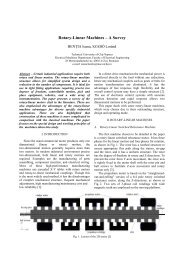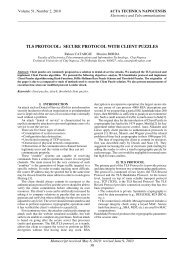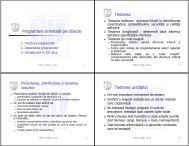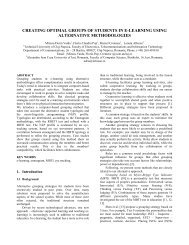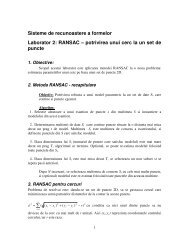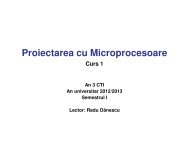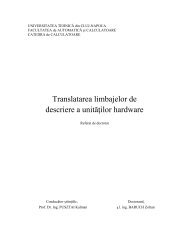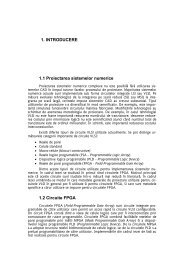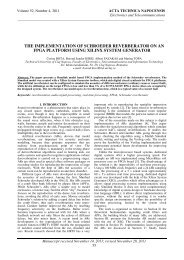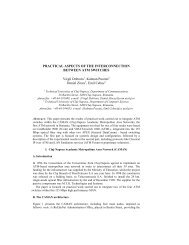LTE Emulator
LTE Emulator
LTE Emulator
Create successful ePaper yourself
Turn your PDF publications into a flip-book with our unique Google optimized e-Paper software.
TUCN – Data Transmission Laboratory<br />
7. Installation of the emulation program. Computational resources required<br />
The emulation program does not require installation; it must be only copied on the hard<br />
drive of the computer used as emulator. All the library files are included (statically linked to) in<br />
the emulation program, which can be run without requiring any other operations.<br />
The program requires one of the Windows NT4 / 2000 / 2003 / XP operation systems. The<br />
emulator also requires the previous installation of the WinPcap 4.0 library, the packet capture<br />
being based on the functions of this library. The installation of this library should be checked<br />
before running the emulator. For this open in the “Start” menu the “All Programs” sub-menu and<br />
check if there is a “WinPcap” entry and if it is the correct version, if a WinPcap library is<br />
installed. A quick check of WinPcap library installation can be made at the moment when the<br />
emulator program is launched. The emulator automatically detects the network cards of the<br />
computer (on which the program is run) and displays the name of these network cards in the<br />
“Client NIC” and “Server NIC” edit boxes of the user interface. If no WinPcap library is<br />
installed the network cards can not be detected and nothing will be displayed in the mentioned<br />
edit boxes.<br />
34<br />
Note: if newer versions of WinPcap library are installed it is necessary to check the<br />
compatibility between the functions of the new version (functions used in the<br />
emulator) and the functions of WinPcap version 4.0. For this, the user should run<br />
the emulation using a known test sequence, see chapter 8. related to the adjustment<br />
of the bit rate transferred through the emulator.<br />
As for the computational resources, the emulation program, which has to work in real time,<br />
must be run on a computer with a minimum processor clock frequency of 1.8 - 2GHz. A<br />
minimum 64MB RAM should suffice to run the program, but to ensure an appropriate<br />
processing speed a high bus clock frequency and a greater RAM are required.<br />
It is also recommended to not run other applications in parallel with the emulator and to set<br />
its priority to „High” in the Task Manager; a „Realtime” level of priority would be a better<br />
choice, but in this case it is possible to block the computer, so this option has to be used carefully.<br />
The deactivation of the network protocols on the computer which runs the emulator is<br />
strongly recommended to avoid the generation of unwanted packets by different components of<br />
the operating system running in the background. The generation of such packets will increase the<br />
number of operations performed by the packet capture block increasing in this way the execution<br />
time.<br />
The tests performed on an Acer laptop with Mobile AMD Sempron 3300+ processor<br />
(processor clock frequency 2GHz) allowed the emulation of a maximum 2.5Mbps bit rate with 1<br />
error event per second.



